| Lesson 5 | The Web Interaction Model and other models |
| Objective | Explain How the Web Interaction Model integrates other Models |
Explain How the Web Interaction Model integrates other Models
The "Web Interaction Model" plays a pivotal role in integrating various models used in e-business and e-commerce, serving as a comprehensive framework that encompasses the multiple dimensions of online business interactions. This model is critical in understanding and optimizing the way businesses interact with customers, partners, and other stakeholders over the web. Here's an in-depth look at how the Web Interaction Model integrates other models in e-commerce and e-business:
By integrating these diverse models, the Web Interaction Model provides a holistic framework for conducting e-business and e-commerce. It addresses the complexities of digital interactions, offering a strategic approach to managing online operations, enhancing customer experience, and driving business growth.
- Customer Relationship Management (CRM) Model: The Web Interaction Model effectively incorporates CRM strategies by facilitating direct and personalized communication with customers. It enables businesses to track customer preferences, behaviors, and feedback through web interactions, thereby enhancing customer service and personalizing marketing efforts.
- Supply Chain Management (SCM) Model: In e-commerce, SCM is crucial for managing product flow and information. The Web Interaction Model integrates SCM by providing real-time data exchange capabilities. This integration allows for efficient inventory management, order tracking, and streamlined supplier interactions, leading to more effective supply chain operations.
- Business-to-Business (B2B) and Business-to-Consumer (B2C) Models: The Web Interaction Model forms the backbone of both B2B and B2C models by enabling seamless transactions and interactions. In B2B, it facilitates the exchange of products, services, and information between businesses, while in B2C, it enhances customer engagement and simplifies the purchasing process.
- Content Management Model: This model is integrated into the Web Interaction Model by managing the creation, storage, and delivery of web content. Effective content management is vital for maintaining an engaging and up-to-date online presence, which is a core aspect of the Web Interaction Model.
- Payment and Transaction Model: The Web Interaction Model includes secure payment gateways and transaction processes, ensuring safe and efficient financial transactions. This integration is crucial for building trust and encouraging online purchases.
- Marketing and Advertising Model: The Web Interaction Model leverages data analytics and digital marketing tools to target and reach audiences effectively. By integrating this model, businesses can conduct market research, run advertising campaigns, and measure their impact, all within the digital ecosystem.
- Social Media and Networking Model: Given the importance of social media in modern e-commerce, the Web Interaction Model incorporates social interactions, enabling businesses to engage with customers on social platforms, gather feedback, and build brand loyalty.
- Data Analytics and Business Intelligence Model: The integration of data analytics models allows for the extraction of actionable insights from web interactions. This aspect of the Web Interaction Model is critical for decision-making, as it provides businesses with a deep understanding of market trends, customer behavior, and operational efficiency.
- Security and Privacy Model: In the Web Interaction Model, integrating robust security measures is essential for protecting sensitive information and ensuring user privacy. This aspect covers everything from data encryption to compliance with privacy laws.
- User Experience (UX) and User Interface (UI) Model: The Web Interaction Model places a strong emphasis on UX and UI design, ensuring that websites and applications are user-friendly, accessible, and visually appealing. This integration is vital for customer satisfaction and retention.
By integrating these diverse models, the Web Interaction Model provides a holistic framework for conducting e-business and e-commerce. It addresses the complexities of digital interactions, offering a strategic approach to managing online operations, enhancing customer experience, and driving business growth.
Although it does not replace the other models we have explored, the Web Interaction Model's integration of other model components
into its five distinct layers allows for a robust illustration of how the Web works. The following series of images shows how the different models relate to each layer of the Web Interaction Model:
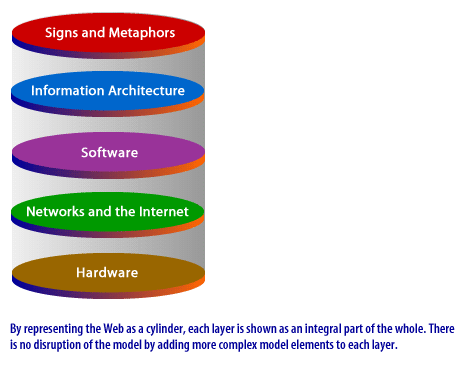
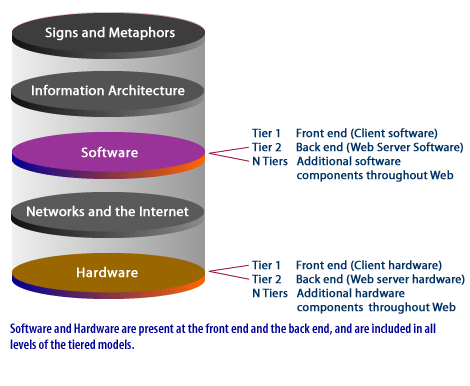
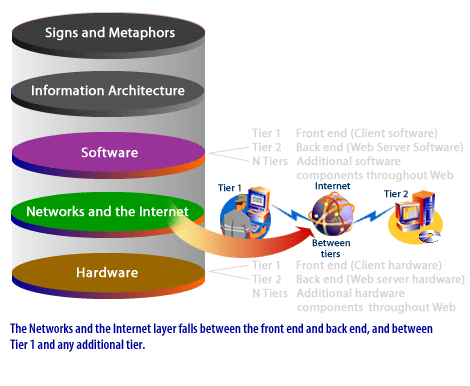
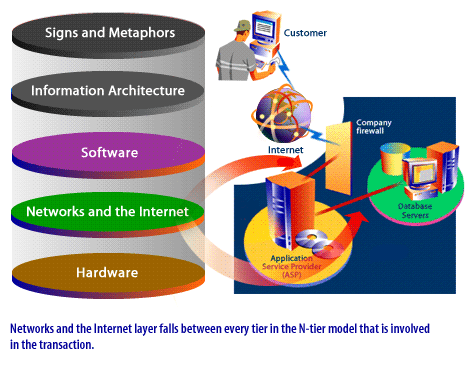
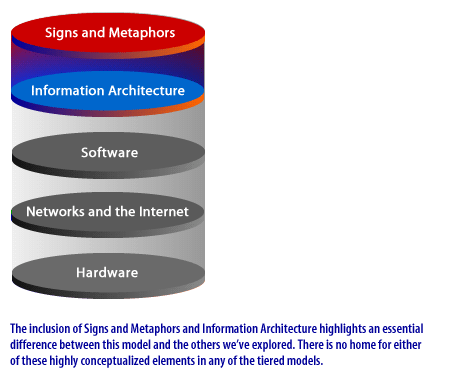
Integrating Software Information Architecture
Model integration is inescapable: any non-trivial system will be too large to fit sensibly in a single model.
The model will have to be split, maybe into different aspects or languages, different modeler roles and tasks, different phases of the software development life cycle, etc. In Domain-Specific Modeling, the possibilities to integrate models are fundamentally better than with general-purpose languages as the company has full access to the language definitions. We describe and compare different ways to integrate DSM models, based on real world experience of what has been shown to work in practice on industrial scales.
In the context of e-Learning, interactivity is defined as "the function of input required by the learner while responding to the computer, the analysis of those responses by the computer, and the nature of the action by the computer."
The next lesson will complete this module.
The next lesson will complete this module.